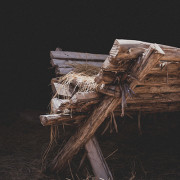Monuments: Lasting memories – Part 6
A monument marking the burial of a wife and mother also marks the fulfillment of God’s promises.
Samuel C. Degner
The monuments we see most often may be the ones we like the least: a headstone in a cemetery, a plaque on a vault, an urn on a mantel. They are sad reminders of sin’s grave consequences.
Hopes unfulfilled
When Moses wrote down the Spirit’s words in the book of Genesis, he mentioned an old monument in Palestine, one put down by a grieving but believing wanderer some four hundred years earlier. It was a simple memorial—just an upright stone—that marked the burial place of Jacob’s dear wife Rachel (Genesis 35:20).
Imagine how Jacob felt as he set up that stone. He had fallen in love with Rachel in less than a month. He had worked for his uncle Laban 14 years to make her his bride. She was the mother of Joseph. Tragically, she died giving birth to Benjamin on the journey to Jacob’s home.
Often grave markers appear to us as reminders of dashed dreams: A life seemingly cut short by disease or accident, a grandparent that never got to meet a grandchild, a husband whose wife lived alone for many years. Surely, you’ve felt the bitterness in your heart as you walked away from the headstone or gently set the urn in its place.
However, as Jacob set up this stone over his wife’s fresh grave, could it be that his mind was not on hopes unfulfilled but on promises kept?
Promises kept
This new monument stood not far from Bethel, where Jacob had set up another stone perhaps 30 years earlier. In fact, he had just stopped there to worship again—and how things had changed since his last visit! The one-time fugitive was heading home. He had made peace with his brother and no longer feared for his life. He was not alone anymore but accompanied by his wives; 12 children (and one soon to be born); and enough flocks, herds, and servants to split into two camps. He even had a new name: Israel. The Lord had kept his word spoken at Bethel years earlier to protect Jacob, bless him, and bring him back. Certainly he would also keep his promise to give Jacob many descendants, who would own the land under the stone and through whom eternal salvation would come to the world. Rachel would live with Jacob—in his heavenly Father’s home!
Not many miles from the place where Rachel was laid to rest, another stone would mark a grave. This one was rolled over the opening of the tomb that held Jacob’s descendant, Jesus of Nazareth. How his followers who watched it set in its place must have felt the bitterness of their unfulfilled hopes! But this stone didn’t stand in place for long; on the third day, an angel rolled it aside. No need for a stone over a vacant tomb!
Jesus’ empty grave now stands as its own monument, proof that God has kept his word to us: Our sins are buried and eternal life is ours. His empty tomb also changes our perspective on the graves of those dear to us. Death still brings heartache, but Jesus’ resurrection promises life after death for all those who believe in him.
So, the monuments we place near our departed loved ones can serve not as reminders of unmet expectations but as signs pointing to a hope that is sure to be fulfilled.
Contributing editor Samuel Degner is a professor at Wisconsin Lutheran Seminary, Mequon, Wisconsin.
This is the sixth article in a nine-part series on Old Testament monuments and what they mean to us today.
SUBMIT YOUR STORY
Do you have a manuscript, idea, or story from your own life you’d like to share for use in Forward in Christ or on wels.net? Use our online form to share it to our editorial office for consideration.
SUBSCRIBE TO FORWARD IN CHRIST
Get inspirational stories, spiritual help, and synod news from Forward in Christ every month. Print and digital subscriptions are available from Northwestern Publishing House.
Author: Samuel C. Degner
Volume 104, Number 10
Issue: October 2017
Copyrighted by WELS Forward in Christ © 2021
Forward in Christ grants permission for any original article (not a reprint) to be printed for use in a WELS church, school, or organization, provided that it is distributed free and indicate Forward in Christ as the source. Images may not be reproduced except in the context of its article. Contact us




